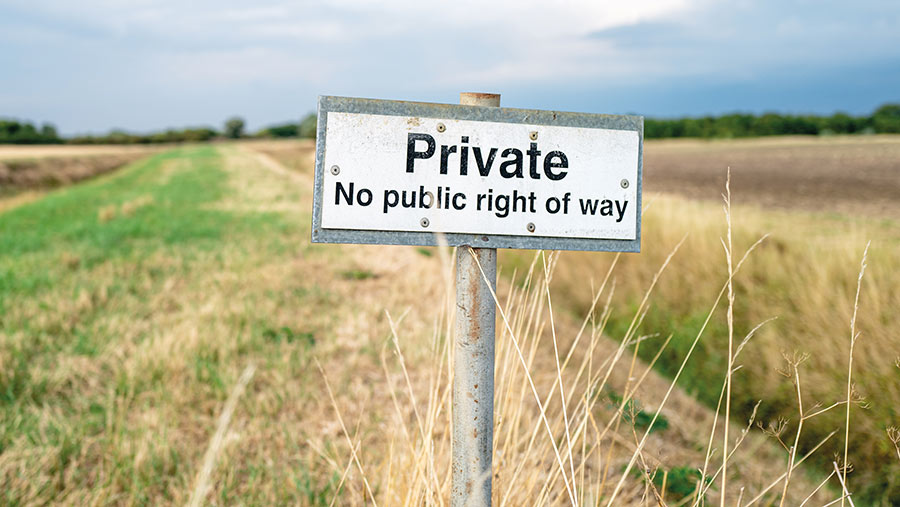Business Clinic: Can landowner block path villagers have used for decades?
 © Nick Beer/Adobe Stock
© Nick Beer/Adobe Stock Whether it’s a legal, tax, insurance, management or land issue, Farmers Weekly’s Business Clinic experts can help.
Richie Rees, associate in the litigation department at law firm Thrings, offers advice on whether a public footpath has been created though long-term use of a disused railway track.
See also: Business Clinic: advice on plan to sell farm at discount on death
Q There is a disused railway line in our village that people have walked along for 30 years or more and this can be proven.
It has no livestock on it, is not planted and is just a grass lane with hedges either side in some areas.
The landowner has now put up a locked gate at one end and signage to say ”private”, stopping village people walking along it.
A public footpath joins the disused railway line. Does he have the right to do this?
A This situation raises the question of whether the landowner is permitted to close off his private property from members of the public despite their apparent historic use of the route for more than 30 years.
On the face of it, the landowner’s actions when installing a locked gate and signage are understandable and in keeping with his right to quiet enjoyment of his own property.
When placed into the context of the previous 30 years, however, there is a real risk they might face legitimate opposition from members of the public.
It appears that the public have walked a specific route unchallenged and uninterrupted for that stretch of time, presumably as a continuation of the official public footpath that joins the disused line.
Use for at least 20 years
When faced with the landowner’s recent actions, any member of the public could seek to create a right of way along the route based on the historic use.
If they can evidence continual – or sufficiently frequent – use of the route for at least 20 years without force, secrecy or permission, the railway line may be dedicated as a public footpath under either common law or section 31 of the Highways Act 1980.
Their use could not have been with the express or implied permission of the landowner (or any previous owner covering the relevant period), but equally they will have had to use the route openly rather than through any attempt to avoid detection by the landowner(s).
If the landowner faced an application from the public that there had been a presumed dedication that a public footpath exists, he would need to challenge the evidence of 20 years’ use.
This might be that he, or any previous owner, was aware of the walkers and expressly let them use the route; or that there is evidence that their use was challenged and they were asked to leave the land at some point within the relevant period that they are relying on to secure dedication of a footpath.
The relevant period must have run before the landowner installed the gate and stopped the public’s access, so it doesn’t matter that he now objects to people walking through the land if they had already been doing so for 20-30 years beforehand.
Based on these facts, there is a real risk of presumed dedication of a footpath here should a member of the public look to convert the historic use of the railway line into an official public right of way.
If that happens, the landowner will be responsible for maintaining the footpath and keeping it open for all members of the public at any time on any given day.
Do you have a question for the panel?
Outline your legal, tax, finance, insurance or farm management question in no more than 350 words and Farmers Weekly will put it to a member of the panel. Please give as much information as possible.
Email your question to FW-Businessclinic@markallengroup.com using the subject line “Business Clinic”.
